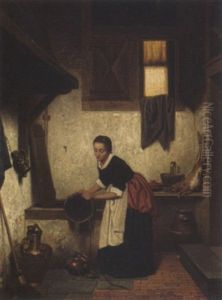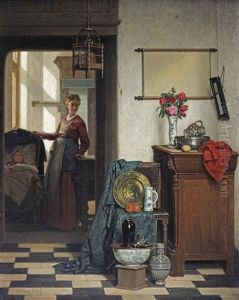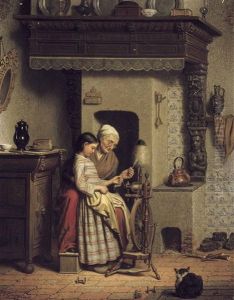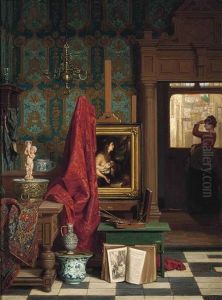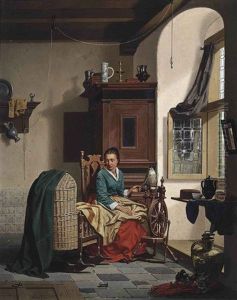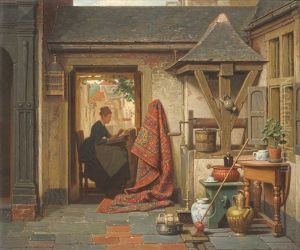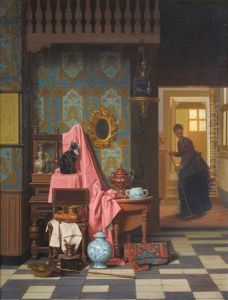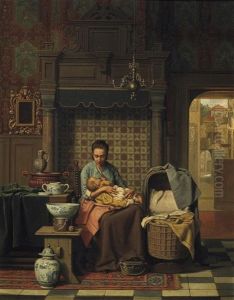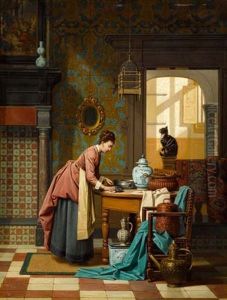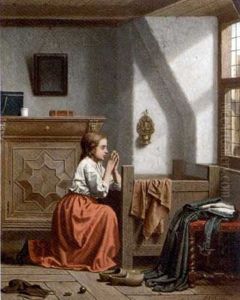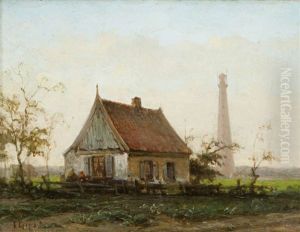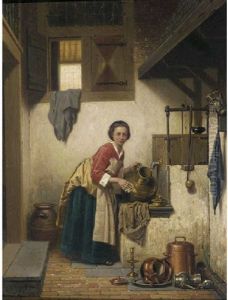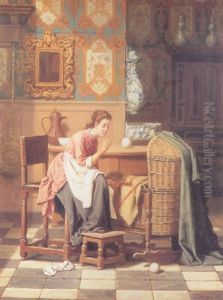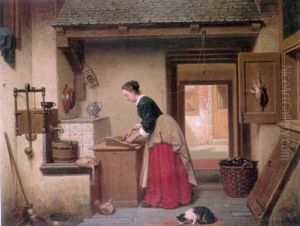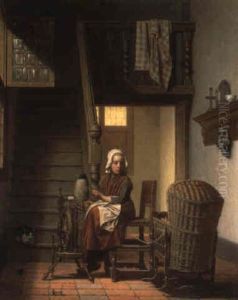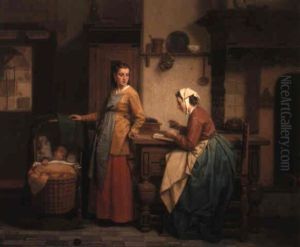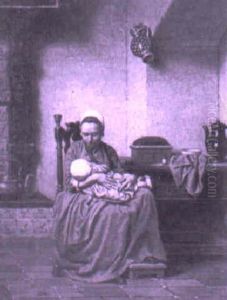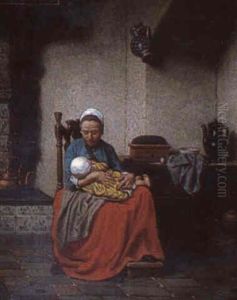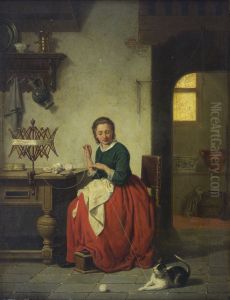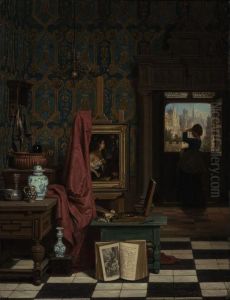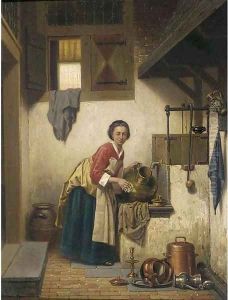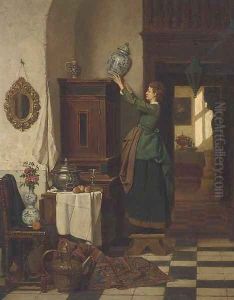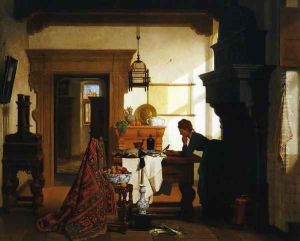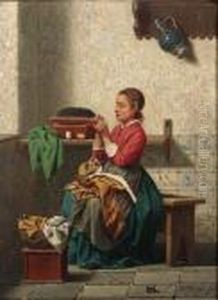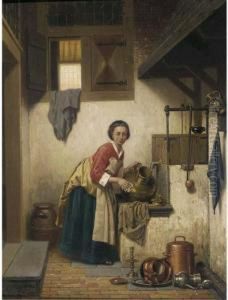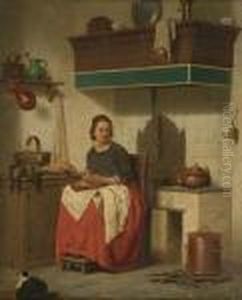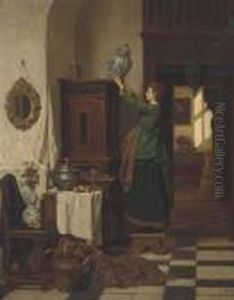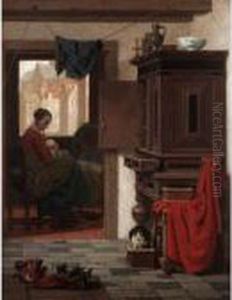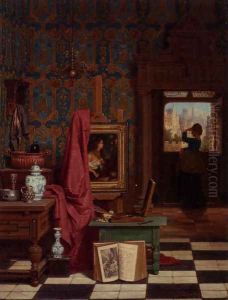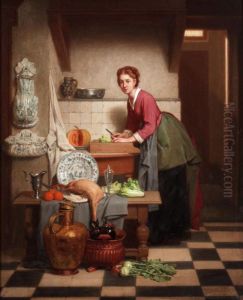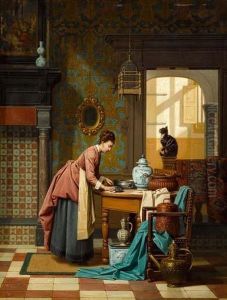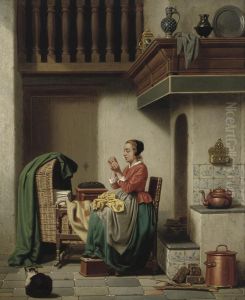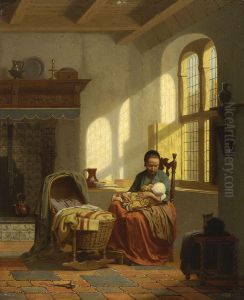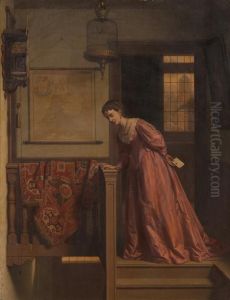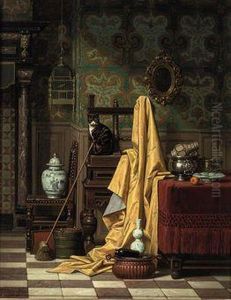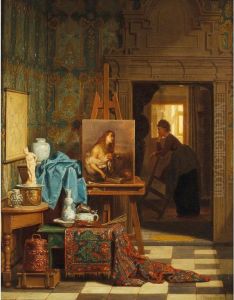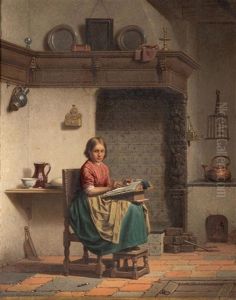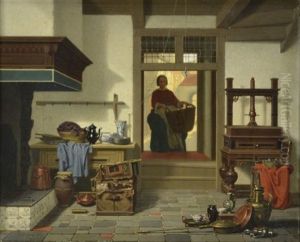Charles Joseph Grips Paintings
Charles Joseph Grips was a Belgian painter who became well known for his genre scenes and interiors, often imbued with a warm, charming atmosphere. Born on November 12, 1825, in Antwerp, Belgium, Grips trained at the Antwerp Academy of Fine Arts, which was a major center for artistic training in the 19th century. His education in Antwerp laid the foundation for his artistic style, which was influenced by the Flemish tradition and the detailed genre painting of the Dutch Golden Age.
Grips's work typically depicted domestic scenes, kitchens, and marketplaces, with an emphasis on realistic details and the daily lives of the working class. He had a particular talent for capturing the textures and surfaces of materials, such as the reflection of light on metal pots and pans or the varied textiles worn by his figures. His use of light and shadow added depth and warmth to his compositions, making them highly appealing to art collectors of his time.
Throughout his career, Grips remained active in the artistic community. He was a member of several art societies, and his work was exhibited widely, including at the Paris Salon and in exhibitions throughout Europe. His paintings were well received, and he garnered a reputation that extended beyond his native Belgium.
Charles Joseph Grips spent some time living and working in the Netherlands, where he also influenced Dutch artists with his genre painting style. His time in the Netherlands allowed him to explore different subjects and settings, which further enriched his artistic repertoire.
Despite the popularity of his work during his lifetime, Grips did not achieve the same level of lasting fame as some of his contemporaries. Nevertheless, he left behind a significant body of work that continues to be appreciated for its craftsmanship and insight into 19th-century life. Charles Joseph Grips passed away on December 18, 1920, leaving a legacy that is especially celebrated in Belgium and the Netherlands, where his contributions to genre painting have been recognized by art historians and collectors alike.
